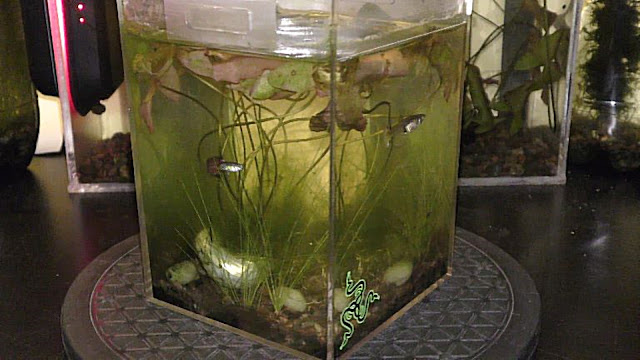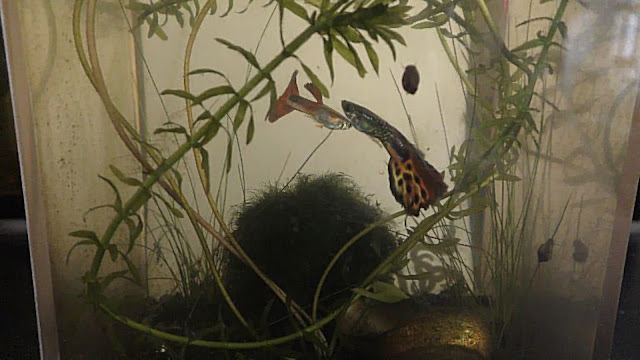You can see hairgrass on the right, a dwarf lily at the back and filamentous algae on the left.
Also, there is common green algae growing on shells and rocks.
I don't change water in my aquariums since the end of 2016.
June 28th, 2017
Here you can see guppies nibble on filamentous algae.
Please check my previous videos about filamentous algae.
November 29th, 2017
All plants and different types of algae compete for nutrition and light.
In this example, you can see the fast growing dwarf lily and filamentous algae grow better than common green algae.
And yet, the common algae grows on all surfaces in the aquarium.
Removing any plant from the tank would create an imbalance in the ecosystem, allowing algae to bloom.
December 4th, 2017
I decide to remove filamentous algae from this and all other aquariums.
May 7th, 2018
The slow growing Marimo ball and hairgrass were holding balance against common green algae until the last week, with some help from an old dwarf lily.
Now the common algae is blooming.
Blooming common algae can be harmful to aquarium ecosystems.
It could cause rapid changes in oxygen level through the day/night cycles.
The oldest female born and grown in this aquarium died on May 24th, 2018
May 30th, 2018
There are different ways to control algae growth.
In this example, I add a fast growing Elodea plant into the aquarium.
July 9th, 2018
The water in the aquarium is clear.
The algae attached to the walls can be removed with a brush - I did not make doubled walls in this aquarium to help with this problem ;)
August 4th, 2018
I add another male guppy to this aquarium.
August 15th, 2018
Adding fast growing plants/ mosses (as I did in a previous example) works effectively to reduce and to prevent the growth of common algae.
Have fun and happy aquariums :)

























No comments:
Post a Comment